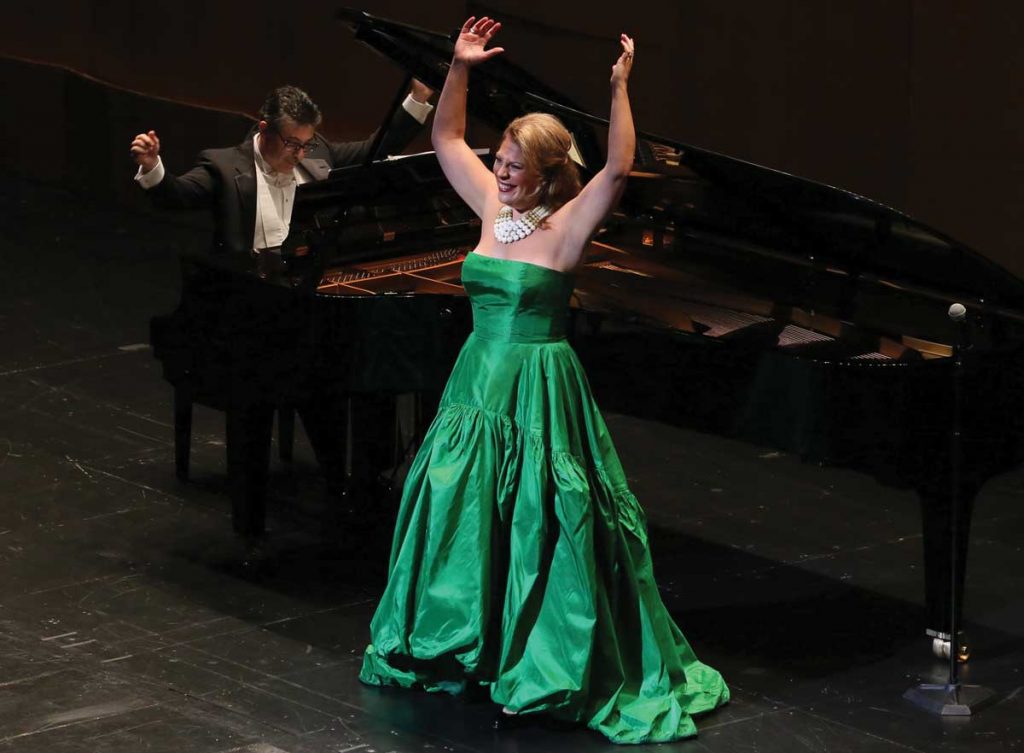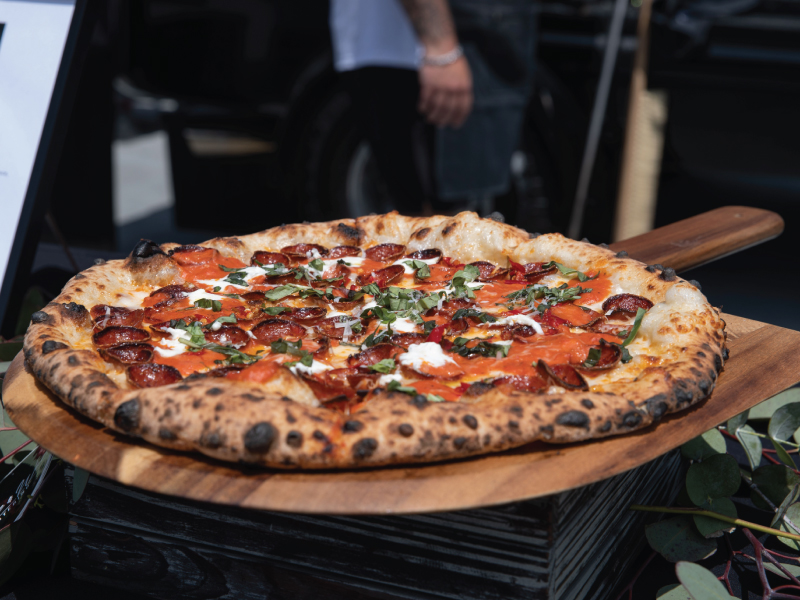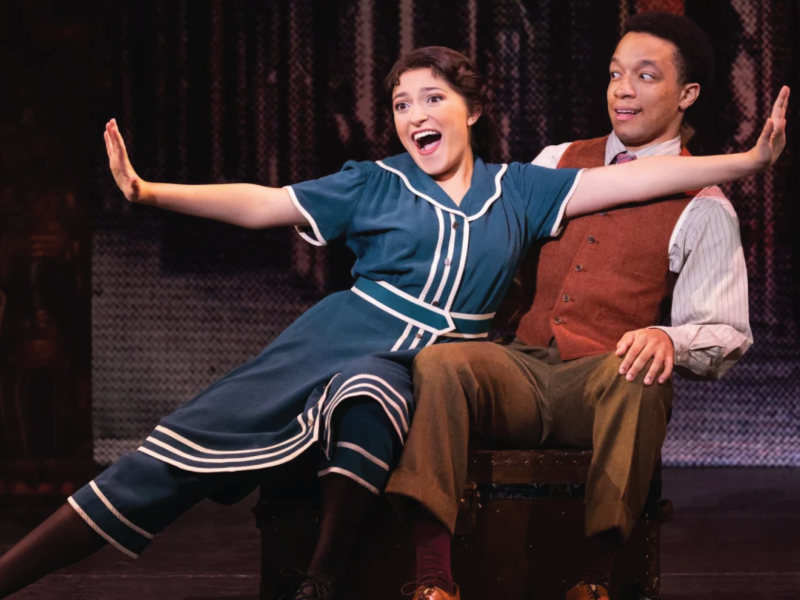

Performance encores showcase artists’ virtuosity and magnify their bond with the audience.
By Libby Slate, from Performances Magazine, December 2016
Sondra Radvanovsky was having a good night at the Dorothy Chandler Pavilion downtown. The American soprano, giving a recital as part of the L.A. Opera season, had performed repertory ranging from Verdi to Copland, interspersed with personal stories and an emotional tribute to her late father. Now she’d returned for encores—to an audience so enthusiastic she ended up singing four.
Radvanovsky, who before that evening in 2014 had starred at L.A. Opera in Tosca and reprises her title role in some performances during Tosca’s upcoming run April 22-May 13, chose a diverse array of encores: “Io son l’umile ancella” from Cilea’s Adriana Lecouvreur, “I Could Have Danced All Night” from Lerner and Loewe’s My Fair Lady, “Vissi d’arte” from Tosca and “O mio babbino caro” from Gianni Schicchi, both by Puccini. It was obvious that the audience wanted to hear whatever she had to offer, and she, in turn, was happy to oblige.
Perhaps no part of a performance exemplifies the artist-audience bond more than the encore, the short musical piece (or pieces) that extends a concert after the curtain call, giving listeners a few more minutes of entertainment to enjoy and often accompanied by an explanation of its personal meaning to the performer.
Indeed, affirms Radvanovsky, “I think the most important thing about an encore is that it has significance to you, the performer, and is something that you are known for or something that means a lot to you, such as a Russian singing a Russian song. It’s also an opportunity to sing something that you love but might not have fit into the context of the whole recital that you were doing.”
Another thing that makes a good encore: “Get the audience on their feet and let them leave on a ‘high’ feeling—it is the last thing they hear you sing.”
Radvanovsky usually chooses her encores, she says, “from a handful of rehearsed pieces, strictly because I know them like the back of my hand and also, after singing a long concert, you want something that’s not too technically taxing. I normally avoid something that is too difficult, such as ‘Casta diva’ from Norma. I also like to try and mix it up—the first encore is something fast and short, followed maybe by something sort of sentimental, followed by, usually, the last encore, the real pièce de résistance aria that ends on a long, high note.”
Though not this opera star’s preference, an encore—the French word for “again”—can also showcase a performer’s virtuosity, be it in speed, dexterity or drama. Christopher Rountree, founder-director of Wild Up—the contemporary classical music collective, playing the Valley Performing Arts Center in Northridge Feb. 16—uses another French term, this one culinary, to describe concert codas.
“Encores are quite a conundrum, aren’t they?” he muses. “I mean, basically what we’re trying to do with an encore is like a reverse amuse bouche” —an appetizer, literally something to entertain the mouth—“give the audience something they didn’t know they were going to get, just in this case at the end, not the beginning. And isn’t the encore a beautiful place to create a moment of contact between artist, now speaking from stage, and audience?”
The encore has evolved through time—artists used to simply perform once more a piece they had already sung or played—and has advanced again recently, thanks to the efforts of violinist Hilary Hahn. Seeing a dearth of modern-day encore material, several years ago Hahn began commissioning 26 composers from around the world to create such pieces and held a contest online for another work. She regularly plays the works throughout her concerts; her CD recording of the 27 pieces won a 2015 Grammy Award.
Encores also have their place in the world of cabaret, where, quips singer Jason Graae, “You tell them that you’re leaving, but you never really go.” In earlier years, notes Graae, who performs a Jerry Herman Celebration with guest star Karen Morrow Jan. 11 at the Wallis Annenberg Center for the Performing Arts in Beverly Hills, “it used to be that an encore was something the audience demanded: ‘We want more!’ and you’d do your favorite song or a tour de force, something not related to the show. Now, an encore is built into the show; you carefully choose it and come out if one person is clapping.”
Still, Graae relishes the fact that there are no rules in cabaret; his encores have ranged from a little ditty called “The Slasher Song” to the love song “I Promise You a Happy Ending” from Herman’s Mack & Mabel. One principle does abide, though: Know your audience and choose accordingly.
Sometimes during an encore, he’ll enhance the already intimate cabaret audience bond by putting down the microphone to sing. “You’re vulnerable, singing from the heart. It’s a nice thing to do.”
What does Graae want the audience to take away from his encores? “Hopefully, they’ve been entertained,” he says. “That’s all I can ask.”



